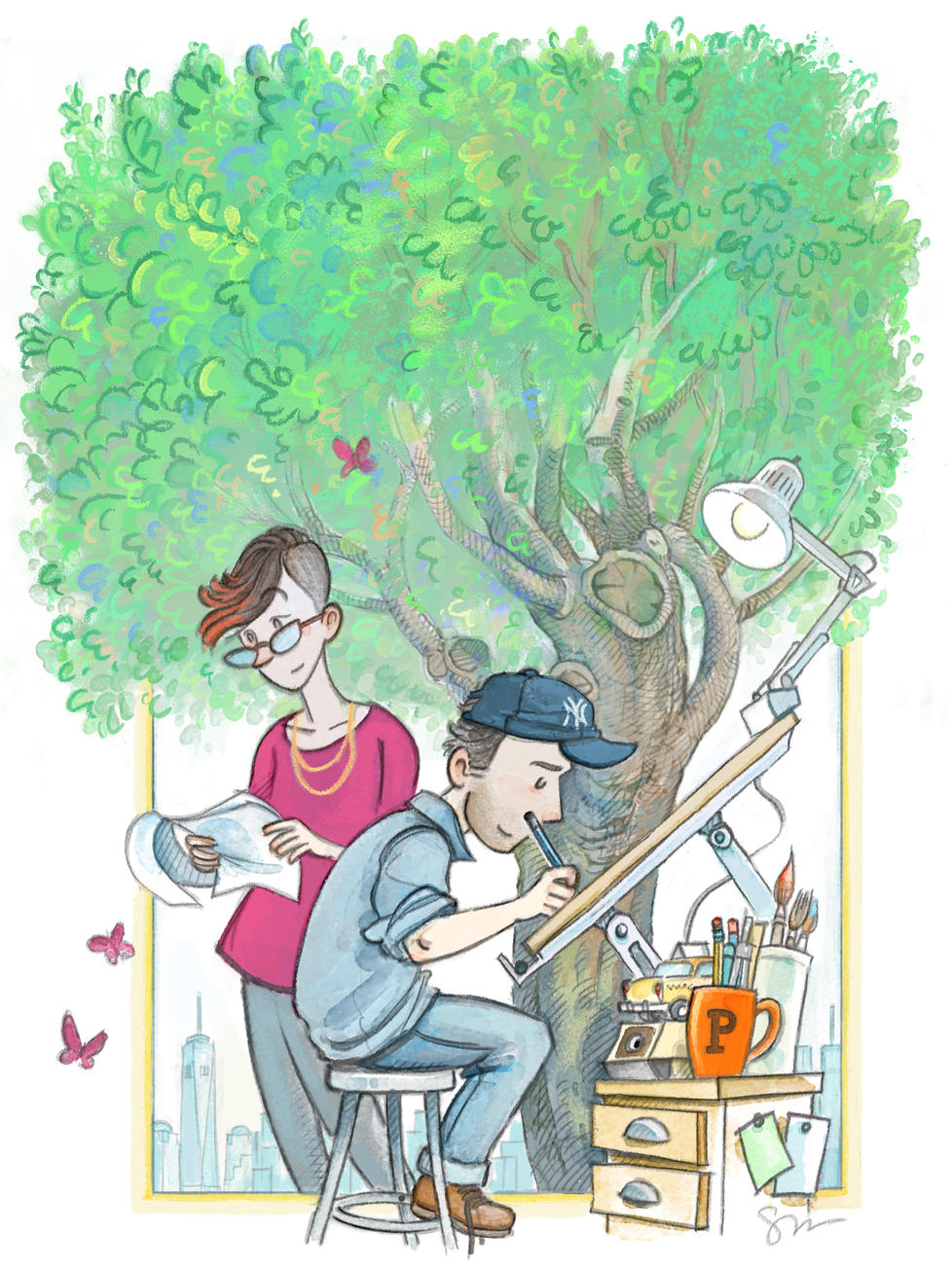Sean Rubin ’09 Writes Book for Children Healing From Trauma
With his wife Dr. Lucy Guarnera ’09, Rubin tells the true story of a tree that survived 9/11

The fact that nature dares to be lovely even when life turns horrific helped inspire Rubin to write his new children’s book, an exploration of life after trauma titled This Very Tree. It follows the true tale of the so-called Survivor Tree, a Callery pear that stood in the plaza of the Twin Towers. The tree tells its own story of being found beneath the rubble, relocated to recover, and ultimately returned to the World Trade Center plaza in 2010.
Rubin has worked on children’s books before, including writing and illustrating Bolivar and illustrating The Astronaut Who Painted the Moon. In the acknowledgements for this new work, Rubin thanks all of the expected people: his editor, his agent, and his wife, Dr. Lucy Guarnera ’09, whose expertise in psychology informed the book. He also thanks an influence: essayist and children’s book author E.B. White.
In his 1949 essay, Here Is New York, White prophetically expressed concern that the city could be destroyed by airplanes. The essay describes a battered tree, representing the city’s “life under difficulties” and “growth against odds.”
A New Yorker himself, Rubin says he sought out to “recapture some of the emotion” in that essay. The challenge was creating illustrated images and a story that were authentic to the horror of 9/11, yet appropriate for young readers. The choice to have the tree itself as the protagonist allowed the story be removed enough as to not frighten children, while still representing the experience of trauma.
A Callery pear tree “has a body… it can get injured, it can grow, it can heal… but we would still see scars,” Rubin says. “The analogies between that and a person...[were] very obvious.”
Guarnera, a clinical psychologist with specialized trauma training and experience treating children and adults affected by crimes, advised Rubin on his approach to the tree’s narrative arc: She suggested the tree experience trauma and healing as a human being would. Thus the tree feels what Guarnera has seen in her patients: a “visceral upheaval” of everything they know, an emotional withdrawal period, a need for community, and sensitivity to reminders of the event.
“I think there’s really two opposing truths about trauma,” she says. “One, that it has this tremendous impact on you and changes things ... and the other side is that most people can and do recover from trauma, especially if they have the support of their community.”
Both Rubin and Guarnera were wary of attaching a “lesson” to the tree’s story. While children’s books tend to moralize our experiences, This Very Tree simply provides a look at the process of healing for little readers trying to navigate big events. Similar to humans, trees exhibit “cycles of renewal,” Guarnera reflects. “There are things that are still growing … even when it looks really bad all around you.”












No responses yet